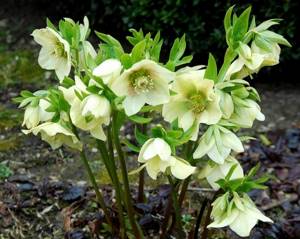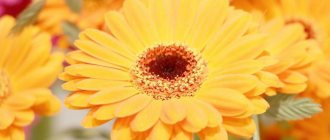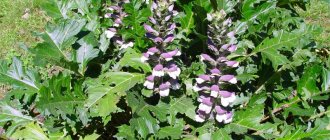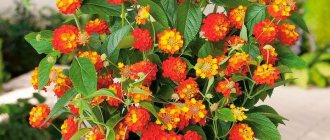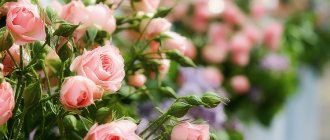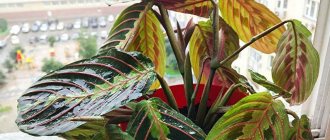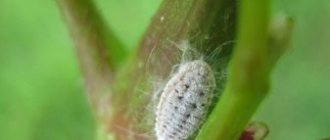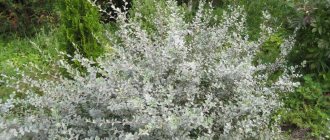Hellebore: varieties and varieties
The lovely flowers of hellebore are so delicate and attractive that its perennial varieties are becoming increasingly popular among garden flower lovers. The perennial plant belongs to the ranunculaceae family. Hellebore is resistant to freezing in cold Russian winters, as well as drought-resistant in hot summers.
Hellebore blooms as soon as the snow melts
Gelliborus begins to bloom in March. At this time, there is an acute shortage of flowering plants in the garden, so large hellebore flowers become a wonderful decoration for still snow-covered flower beds.
The plant can reach a height of 0.5 m. The basal rosette consists of opposite leaves on long petioles. Flowers rise above a rosette of leaves on a bare peduncle. The color of the petals is usually pale pastel colors.
Natural species of Gelliborus grow in the foothills of the Caucasus, forests of Adygea, the Mediterranean and Western Asia. Recently, the natural habitat of hellebore has been significantly reduced. The plant is intensively used for medicinal purposes.
Several varieties of hellebore are grown in open ground:
- Black hellebore (Helleborus niger) – the plant blooms with white or pinkish flowers.
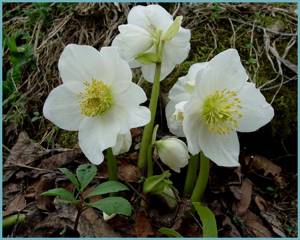
Hellebore black
- Eastern hellebore (Helleborus orientalis) - compared to other varieties, it is characterized by later flowering.

Oriental hellebore
- Stinking hellebore (Helleborus foetidus) - the unusual green flowers of this plant have an unusual beauty, but not a very pleasant aroma.

Hellebore stinking
- Caucasian hellebore (Helleborus caucasicus) - natural habitat - the foothills of the Caucasus. The small, pale green flowers are not particularly beautiful, but this variety is so winter-hardy that it does not shed its leaves even in some winters. All parts of the plant are very poisonous.

Hellebore Caucasian
Advice! Hellebore: Cultivate for ornamental purposes with care.
Reproduction methods
When growing hellebores, there are mainly two methods of propagation :
- dividing the bush;
- seeds.
It is best to divide the bush immediately after winter, before the roots begin to grow. The separated roots are planted in prepared holes in the soil.
Remember, the plant undergoes a very difficult process of transplantation. In the year of replanting, flowering may not occur, and without proper care the plant may die. To obtain young animals using this method of propagation, you must be patient, since hellebore grows very slowly.
The second method of propagation is planting seeds. However, there are some nuances here too - rapid loss of germination of hellebore seeds . If stored for a long time, they may not sprout at all. The ideal option is to collect seeds from a growing flower immediately after they ripen and plant them immediately. The main enemy for seeds is overdrying, so sowing can be done even with slightly immature seeds.
At the beginning of summer, you can already collect the seeds and plant them directly in the soil. The seeds are sown at a shallow depth of one centimeter. The first shoots may appear next year, or maybe a few years later.
For sowing, you can also purchase seeds at a flower shop, but they should be planted in open soil no later than several months before the onset of cold weather.
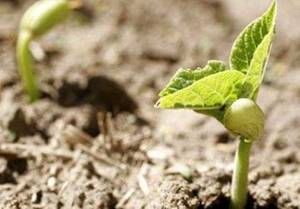
Seeds can be planted in seedling containers before the onset of winter, which should be stored indoors and then placed in a cool place (refrigerator or basement). Seedlings must be inspected regularly, and the soil should be slightly moist and free of mold. For seedlings, it is best to use peat-sand soil; it is not so susceptible to mold fungi.
In the spring, seedlings require certain care: when several leaves appear, they must be planted in a separate container and grown until autumn, when the seedlings should be planted in open ground. The seeds will give their first flowering no earlier than three years .
Planting a plant
Considering that hellebores are perennial plants and grow in one place without replanting for many years, you should choose a place for planting the crop in accordance with the requirements of agricultural technology.
Hellebores grow best in humus-rich soils, under tree canopies, where there is a lot of rotted foliage. The plant requires a shady location with some sunlight. Tree crowns that allow sunlight to pass through are an ideal environment for hellebores. Hellebore grows well when the plant is planted and cared for correctly.
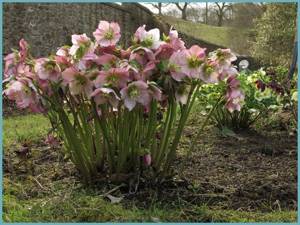
By choosing the right place for planting, you will ensure annual active flowering of the perennial in your garden
The soil for planting the plant must retain moisture: hellebore cannot tolerate a lack of moisture. Care should be taken that the soil for planting hellebore does not contain clay particles and is not compacted or heavy.
Planting of hellebore segments or bushes is done in specially prepared shallow square holes (approximately 0.25 x 0.25 m). A distance of at least 0.3 m is maintained between plants. Compost is added to the bottom of the pit. The roots of the hellebore are straightened in the hole, sprinkled with soil on all sides, pressed and watered abundantly. For approximately 3 weeks from the date of planting, abundant watering is required, while avoiding overflow and stagnation of water.
Hellebore: planting and transplanting dates
Helleborus should be planted in early autumn so that it has time to take root by winter. Thanks to self-seeding, the flower will grow over time: it drowns out weeds and creates entire colonies.
The unauthorized growth of hellebore does not look very neat from an aesthetic point of view, so it is important to thin it out in time.
To rejuvenate a flower bed, it is worth digging up young plants for replanting from time to time, while at the same time getting rid of old ones.
How to plant hellebore: 5 important rules
- The flower has a small root, so a shallow hole and a small hole - up to 30 cm - are enough.
- If you know that water stagnates in your area, you should take care of drainage. To do this, place a small pebble on the bottom of the hole and sprinkle with sand.
- Do not bury the growth buds: the root collar should be at a natural level.
- Water the soil, but do not overdo it: after drying, there should be no crust left on the surface.
- For the first week after planting, water the plants every evening, 1 liter per bush. If the days are rainy, don't worry: the weather will do everything for you.
Features of spring planting of hellebore
When planting in spring, the hole should be deeper than the hellebore root system. Season the bottom of the hole with humus and rotted compost.
Place the bush vertically and straighten the root - it should be evenly distributed over the hole without kinks. Sprinkle the root with soil and press lightly with your palm. Water the plant thoroughly.

Hellebore care
Gelliborus does not require special care. It is enough to provide the plant with regular watering, mulch the soil in the ridges, and also carry out several fertilizing - that’s all the care for hellebores. Growing a perennial and using hellebore in the landscape design of gardens and parks is preferable because the plant does not require special care.
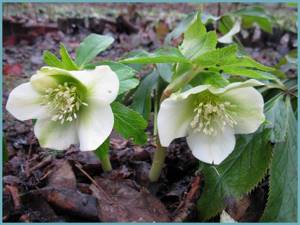
By mulching the soil around the crop, you will create comfortable conditions for it
Landing area
Having decided on the orth, you need to choose a place where the hellebore will grow. You should take into account the flowering period of the plant, its long lifespan and the fact that it does not like transplanting. Therefore, planting must be approached rationally and responsibly. It is better to plant it in groups. The thickets of the flower restrain weeds and, lying on the ground in a continuous carpet, create an evergreen mulch.
Hellebores do not require special soil. Wet soil is not suitable for planting. Fertile soil rich in rotted leaves and humus is preferable. If it is acidic, then it should be limed.
The flower is a shade-loving plant and does not like direct sunlight. It grows well in the partial shade of trees and shrubs, where the soil is always moist. Fallen leaves will serve as fertilizer and natural mulch for the helleborus. In good conditions, the bush will grow quickly, forming a large number of peduncles and stems.
Plant propagation
Hellebore can be propagated by dividing bushes and seeds.
Seed propagation - only when planting freshly harvested plant seeds: old seeds lose their viability. Gelliborus should be sown in light, well-drained soil, planting the seeds to a depth of 1.5 cm. Flowering of plants grown from seeds is possible only in the 3rd year of cultivation.
Grown seedlings require several pickings. The plant is planted in a permanent place 2 years after sowing. The best time to plant hellebore in the garden is September.
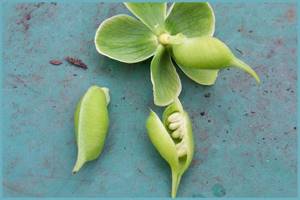
Hellebore seeds
After adult hellebore bushes have flowered, the plant can be divided to obtain planting material of the desired variety. To do this, simply divide the root system into several parts, dusting the cut areas with charcoal. Hellebore divisions are planted in a permanent place in pre-dug holes.
Methods for propagating hellebore bushes are selected depending on the type of plant. Black and oriental hellebores are easiest to propagate vegetatively, by dividing the bush or rhizome. At the same time, it is better to divide black hellebore in the spring, and oriental hellebore - in the fall. Stinking hellebore reproduces well by self-sowing; this species does not tolerate vegetative propagation.
Varieties and hybrids of frost-resistant hellebores of the Oriental Hybrids group
Double Ellen variety series of double hellebores
Variety series with large (up to 8 cm) double flowers, 40 cm high. Color options: Double Ellen Picotee (white-pink flowers with thick red-burgundy strokes from the center), Double Ellen White (white with a light dotted burgundy pattern), Double Ellen Purple (dark purple), Double Ellen Green (yellow-green), Double Ellen Yellow (cream yellow), Double Ellen Red (red-pink, heavily dotted with small dots and streaks), Double Ellen Pink Spotted (pink with dots) maroon pattern), Double Ellen White Spotted (white with a maroon pattern in the center).
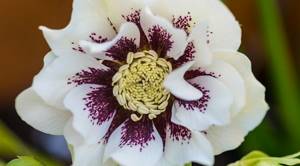
Hellebore from the group of oriental hybrids variety Double Ellen White
Hellebore variety series Pretty Ellen
Color options: Pretty Ellen Red (dark reddish), Pretty Ellen Spotted (pinkish-white with burgundy dotted pattern on the petals).
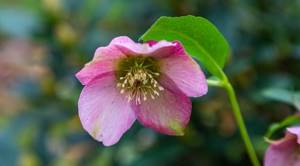
Hellebore variety Pretty Ellen Pink
Variety series Spring Promise
The flowers are large, 5–7 cm in diameter, double (2–3 rows of petals), white, mottled with purple-pink veins. There is a purple spot at the base of the petals. The varieties were obtained by the famous breeder Josef Heuger based on interspecific hybrids of hellebore. All varieties bear female names.
Color options: Spring Promise Valerie (green, edges unevenly colored purple), Spring Promise Lilli (white, streaked with purple-pink), etc.
Varieties of double hellebores Double Queen
The flowers are double, 4–5 cm in diameter, and can be white, burgundy, pink or light green.
Ballard's group hellebore series
Includes forms with a variety of color shades: from white to purple-black, sometimes with specks and spots. The most common form is with burgundy flowers. Interestingly, the Ballard's group includes all plants descended from varieties and seedlings obtained by Helen Ballard.
Variety series of winter-hardy super varieties Schmiemann Strain Lady Series (short name for the Lady Series)
A series of winter-hardy super varieties, named after the creator - Gisela Schmiemann (Cologne, Germany) - heir to the Helen Ballard collection. The variety series is characterized by large flowers of various colors. The series is interesting for seed propagation: in 80% of cases they inherit the color of the flower of the plant from which the seeds were collected. The flowers are large, up to 12 cm in diameter, solitary or 3 per shoot.
Color options: Red Lady (red-burgundy flowers), Pink Lady (light pink), Blue Lady (dark purple), Yellow Lady (cream-lemon), Metallic Blue (purple with a bluish tint), White Lady Spotted (white with red spots in the center), Pink Lady Spotted (pink with red specks).

Hellebore from the group of oriental hybrids variety Spring Cristal
Diseases and pests
Pests of the crop are aphids, snails and slugs, and rodents. It is not very often that you can see hop moth caterpillars on hellebores, gnawing the rhizomes of the plant. Control measures: use of systemic insecticides in accordance with manufacturers' recommendations.
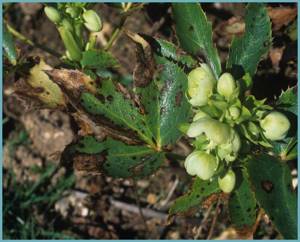
Damage to hellebore leaves by a fungal disease
The leaves of the plant are damaged by the fungus Coniothyrium hellebori, which causes the formation of dark spots. The disease progresses in damp and warm weather. The fight against the spread of the disease comes down to pruning diseased leaves and treating the plant with systemic fungicides.
Planting hellebore on the site
The Christmas rose does not tolerate transplantation and does not like to be disturbed unnecessarily. The plant can be grown in one place for up to 10 years. Therefore, choosing a place for this evergreen crop must be approached responsibly.
Boarding time
Hellebores are planted in open ground in spring or in the first months of autumn. It is better to plant perennials in April, when the snow melts. In the fall, planting is done before mid-September to give the plant time to adapt to a new place, otherwise in the cold winter, especially in the middle zone, it will have a hard time.
Selecting a location
The place for the winter hut is chosen in the shade. An area under the shade of trees or shrubs is suitable. To achieve maximum decorative value, it is better to plant perennials in groups.
The soil
Hellebore grows well in clay soil with a neutral pH level. For this perennial, it is advisable to choose a loose, light, well-drained substrate.
Planting hellebore
Planting holes are prepared with a depth of 30 cm, with a distance of at least 40 cm between them. Planting rules:
- The holes are half filled with compost.
- Place the rhizome in a hole and cover it with soil.
- The soil is well compacted and watered.
Plants after planting are often watered with plenty of water for the first 3 weeks, keeping the soil constantly moist.
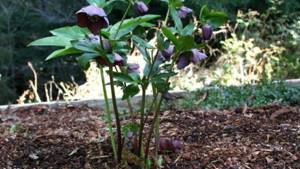
Hellebore: combination with other plants
Hellebore grows and develops well under the shade of bushes and deciduous trees. In group plantings, the plant should be used only in shaded areas. An ideal combination of hellebore with early flowering crocuses, small-bulbous erantis and scylla, low-growing early tulips, daffodils, and hazel grouse. The decorative foliage of hellebore harmonizes with variegated crops that develop in the summer.

Hellebore in the flowerbed
How to propagate hellebore
The flower can be propagated by vegetative or seed methods. The first method is more effective:
- Divide the bushes for seedlings in the fall or spring.
- To replant correctly, first carefully dig up the bush and rinse the roots with water - this way you can easily identify the growing points.
- Carefully cut between the growing points with a sharp knife. Select at least two to three sprouts per plot.
The seed planting method is rarely used. The germination rate of seeds decreases over time, it is difficult to buy helleborus seeds, and plants grown from seeds bloom only after 4-5 years.
Read also
Hellebore in landscape design
In landscape design, hellebore is used to design shady alpine slides. The early flowering of the crop allows you to decorate the landscape composition in March, when the snow cover has not yet melted. Large decorative hellebore bushes form a wonderful combination in plantings of different types of plants, when dense clumps are formed, blooming with delicate flowers of pastel colors.
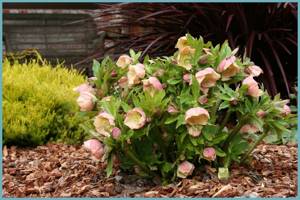
Hellebore in landscape design
It is allowed to plant hellebores in ridges and mixborders. The crop should not be planted in places where children can play: all parts of the plant are very poisonous.
Hellebore (Helleborus) – species, varieties, cultivation. Photo

HELLEBREEK IS A POISONOUS BEAUTY THAT DRIVES AWAY EVIL SPIRITS
He doesn’t care about snow or slush, he is not afraid of snowstorms and blizzards, and even if frost hits, he will endure it with fortitude. Thanks to its tough leaves that overwinter under the snow and flowers that appear at “non-standard” times, hellebore has acquired the reputation of an unpretentious plant. Delicate, as if carved from marble, with many stamens with golden anthers, hellebore flowers will decorate any flower bed or corner of the garden.
Although hellebore is native to the Mediterranean region, it has perfectly adapted to cultivation in Eastern Europe and feels as comfortable here as in its native Balkans. Due to the abnormally early flowering, various mystical properties were attributed to hellebore; for example, this plant is associated with a belief about protection from evil forces, black magic and hostile spirits. According to other legends, hellebore, on the contrary, could summon a demon into our world.
SYSTEMATICS AND NAMES
Hellebore (Helleborus) belongs to the family Ranunculaceae (Ranunculaceae) of the order Ranunculaceae, class Dicotyledonous plants. All members of the family are very ancient - they were among the first flowering plants on earth that have survived to this day.
Popularly, hellebore is also called winterberry or frostflower. The translation of the Latin name - helleborus - is becoming increasingly popular, this is due to the fact that the Latin name of hellebore is written on the packaging of plant material.
The Western flower names "Christmas rose" and "Lent rose" are associated with the winter flowering of hellebore, but not with the rose. In this case, the folk tradition of calling beautiful flowers “rose” played a role, regardless of their real taxonomy. In addition, in Germany it is customary to give a pot of blooming hellebore for Christmas. According to German legend, this flower appeared from the tears of a poor shepherd who fell to the ground, saddened by the fact that he was unable to give a gift to the born Christ.
There are 14 species of hellebore found in nature; according to other sources, their number is about 20. The spread in numbers is due to the fact that some variations of hellebore are classified as separate species. All types and varieties of hellebore are poisonous plants containing alkaloids with cardiac effects.
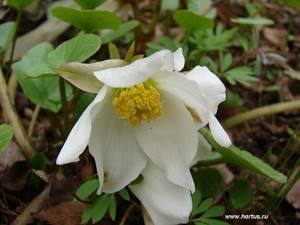
In the photo: black hellebore, Botanical Garden of Moscow State University "Apothecary Garden"
MORPHOLOGICAL CHARACTERISTICS - DESCRIPTION OF HELLEBELLE
The life form of hellebore is a perennial herbaceous evergreen plant. Dark green leathery leaves on long petioles are collected in a basal rosette. The leaf blade is palmately dissected.
The height of hellebore is 30–100 cm, depending on the variety and variety.
Flowers are on long peduncles, collected in racemes. The flowers are bisexual, actinomorphic (with radial symmetry), with a double perianth. The sepals are large, non-falling, colored in various colors from snow-white to purple, depending on the species and variety. These large sepals are usually mistaken for petals - they have taken on the function of attracting pollinating insects. The true petals of hellebore are small, modified into nectaries. The size of the “flower” in some varieties is 8–10 cm in diameter.
Hellebore blooms in early spring, and in regions with milder climates, such as Western Europe, at the end of winter. It has many stamens, and they are arranged in a spiral, which serves as further evidence of the ancient origin of hellebore. Hybrids with spotted flowers and a double “crown” have been bred.
An interesting feature of hellebore flowers is that they change color depending on the duration of flowering. Over time, the plastids located in the sepals transform from leucoplasts and chromoplasts into chloroplasts containing a green pigment. This occurs after the flower has been pollinated, when the attraction of insects is not required. The greened sepals begin to perform the functions of the green parts of the plant, that is, to synthesize organic substances.
► ASTYLBE
► AUTUMN ANEMONES
HELLE HELLE IN LANDSCAPE DESIGN
All types of hellebore are beautiful during the flowering period, but mainly black hellebore, M. Caucasian, M. oriental and M. stinking are used as ornamental plants.
When using Helleborus in plant compositions, you need to remember that it does not like frequent transplants from place to place. Therefore, you need to immediately select a place where the hellebore will grow for several years. Thanks to their shiny dark green leaves, hellebores are decorative all year round, not just during the flowering period.
These plants are used: • as an element in compositions with decorative flowering and decorative deciduous perennials ( bergenia
,
saxifrage
, lumbago);
• as a ground cover evergreen plant; • a plant for planting in places with a limited amount of sunlight (partial shade and shade), including under the crowns of bushes and trees, where most perennials cannot grow; • in a group with spring bulbous ephemeroids ( snowdrops
,
scillas
,
hyacinths
, daffodils,
primroses
); • in rock gardens and rockeries, including in a group with evergreen deciduous plants - heather, Erica, cranberry and others; • as a container plant for decorating patios, terraces, paths.
In addition, hellebores are grown • for forcing in winter; • for cutting into bouquets.

In the photo: purple hellebore (red, blushing), Botanical Garden of Moscow State University "Apothecary Garden"
GROWING CONDITIONS
Temperature
Some believe that all helleboruses are extremely frost-resistant plants that do not need shelter in winter. This is an erroneous point of view: some species have frost resistance at the level of zones 6 - 7, for example, the blackening hellebore, which is popular in gardening.
But the eastern hellebore feels great, not needing shelter in 4 - 5 zones. Therefore, whether to cover hellebore for the winter can only be answered by knowing its type and the climate of the local region.
Lighting
Hellebores grow well in a variety of lighting conditions, but the best for them is light partial shade or diffused sunlight - the conditions in which plants live in nature. But in general, Hellioborus can be considered a versatile plant because it covers the entire range of sunlight acceptable to plants and can grow in both sun and deep shade.
Different types of hellebores react differently to excess sunlight - in some, the foliage loses its beautiful bright color, fading in the sun.
Sometimes there is a discrepancy between the written articles and the actual cultivation of hellebore. That is, the gardener notices that the flower feels great under the scorching rays of the sun, which do not harm the hellebore. This is due to the large number of new hybrids and varieties created by breeders in the last few decades. They have different requirements for growing conditions.
Substrate
Just as with regard to lighting, hellebores are not too picky when it comes to soil. They can grow both on neutral substrates and on soils with a weak alkaline environment. Hellebores do not like acidic substrates, both in nature and in culture, but they can still grow in slightly acidic soil.
To avoid the death of the plant and create comfortable conditions for the hellebore, before planting you need to find out the pH of the soil in the area. If the substrate has an acidic environment, then it is alkalized, making it neutral or alkaline. For this purpose, the easiest way is to use chalk mixed with soil in a 1:1 ratio. After the chalk is mixed with the ground, it is poured into the prepared hole, watered with water and left for a couple of days. Then compost is added to the hole, mixed again, spilled and left for another week. It is necessary to ensure that the earth mass remains homogeneous and crumbly.
► Brunner
The soil for planting should be rich in nutrients, so it is advisable to add organic fertilizers (compost, humus).
Humidity and watering
Although hellebores love a moist substrate, they can tolerate dry periods: adult plants have a powerful, developed rhizome, which contains a supply of liquid. But it is better not to leave young plants, seedlings, separated plant parts or transplanted hellebores without additional watering in the absence of rain.
Fertilizer
Hellebores are usually fertilized in the spring - during this period organic fertilizers dissolved in water are applied. In summer and late autumn, hellebore can be “fed” with complex mineral fertilizers of prolonged action - that is, solid fertilizers that slowly dissolve, giving the plant the necessary components.
Diseases and pests
In open ground, hellebore rarely suffers from pests and diseases. These can be aphids, slugs and snails, mice, and caterpillars of the fine hop moth. Among the diseases, the predominant ones are of fungal origin, arising due to high humidity. In case of problems, standard control methods are used and prevention is observed.
HELLEBORE REPRODUCTION
For gardeners, the best way to propagate hellebores is to divide the overgrown plant - that is, vegetative propagation. Having dug up the hellebore, cut the sections so that each has roots and at least one bud. The optimal timing for dividing the bush is autumn and the calendar beginning of spring (preferable).
If you are growing a species plant (not a hybrid), you can grow hellebore from your own seeds. Hybrid seeds need to be purchased.

In the photo: Eastern hellebore, Botanical Garden of Moscow State University "Apothecary Garden"
Growing hellebore from seeds
Sowing in the ground
To avoid cracking, unripe seeds are collected with gloves so as not to cause burns from the plant juice. They are ripened at room conditions. Direct sowing into the ground is carried out in the fall with fresh seeds or in the spring after stratification of the seeds. Seed germination occurs after a year, and flowering occurs after four years.
Through seedlings
To obtain seedlings, seeds are sown in a mixture of peat and sand. Peat will prevent the formation of mold in the soil, and sand will make the substrate breathable; it should make up a quarter of the soil mixture. If you use a different soil mixture, be sure to spray it with a fungicide to prevent fungal infection.
Planting containers are kept for three months at a temperature of + 20 degrees or slightly higher. The next month or three - in the refrigerator with a positive temperature of 2 to 4 degrees until the seeds germinate. The soil should always be moist. After germination, the container is moved to a bright windowsill without scorching sun.
When the sprouts form a pair of true leaves, they are transplanted into separate pots or onto a growing bed in partial shade, leaving 15-20 centimeters between the plants. They are looked after: watered, loosened, weeded; if the soil was poorly fertilized, they are fed with a dissolved mineral complex. At the end of summer or early autumn, the grown seedlings are planted in a permanent place at a distance of 20-40 cm, depending on the type and variety.
FORCING HELLEBORE
Hellebores can be made to bloom in winter. Having dug up the rhizomes in the fall, plant them in containers filled with fertile soil and place them in a cool room in the light. Don't let the soil dry out. From December to March, illuminate the hellebore, and it will delight you with long flowering, opening its flowers one after another. In spring, return it to the garden in open ground in a shady place.
TYPES AND VARIETIES OF THE GENUS HELLEBORUS (HELLEBORUS)
There is a lot of confusion about hellebore species because the plants have many variations, natural varieties and interspecific hybrids. For example, the green hellebore, identified as a separate species, is called by some a subspecies of the blackening hellebore. Another example is the purple hellebore, classified as a species that some researchers call a variety of green hellebore. And the Caucasian hellebore (H.caucasicus), often mentioned in Russian-language literature, is not distinguished as a species in the international classification.
Black hellebore (Helleborus niger)
– the type species of the genus, described by Carl Linnaeus, widely known and used as a medicinal plant. The plant's habitat is Alpine forests, but currently black hellebore grows much wider than its original natural range, including being introduced into North America. This species got its name because of the color of the rhizome.
The flowering of black hellebore depends on the region: in Central and Western Europe it blooms starting in January, in southern Europe the plant blooms in November-December. In Eastern Europe, hellebore flowering begins from late February to early March, and in some areas even from late March to April.
This species is characterized by good frost resistance and large, usually single, flowers. The most popular variety – “Potters Wheel” – has large white, almost non-drooping flowers, the diameter of which can reach 10–12 cm.
Stinking hellebore (H. foetidus)
and
M. fragrant (H. odorus)
have a number of similar morphological characteristics: the height of the bush is 50 - 60 cm, in the inflorescence there are 2 - 4 flowers, the diameter of which does not exceed 7 cm. The shade of the perianth is light green or yellow-green. The species are easy to distinguish during the flowering period: the first, as the name implies, has an unpleasant odor for people, and the second, on the contrary, has a delicate aroma. These features are associated with various insect pollinators. Stinking hellebore attracts mainly flies, and fragrant hellebore attracts bees.
Balkan species ornate hellebore (H. torquatus)
became the basis for a whole line of terry varieties “Party Dress” or “Party Dress”. These hybrids live up to their name: eye-catching, with double perianth, sepals usually in several shades, they are designed to create a good mood. For example, in the flowers of the "Pati Dress" "White Owl" variety, the light green shade gradually changes to white, and then turns into pink.
The winter hardiness of this species and its combs is from zone 5 and above; in some areas, in winters with little snow, the plant may need shelter.
Eastern hellebore (H.orienalis)
- one of the most popular and beloved species by gardeners, on the basis of which many varieties have been created, distinguished by a wide variety of colors - from white to almost black, including hybrids with speckled perianth and a rare bluish-lilac tint: • “White Swan” (“ White Swan") - a variety with large snow-white flowers; • “Spring Promise Valerie” (“Spring Promise Valerie”) is a large bush with powerful stems on which green flowers develop with a contrasting purple edge; • “Rock and Roll” - a variety with several rows of sepals, making the flowers look like double ones; the sepals are made decorative by small dots on their surface; • “Blue Anemone” (“Blue Anemone”) – a variety with lilac-lilac or lilac-blue petals.
In Germany, breeders obtained varieties of oriental hellebore with a wide range of colors, which were united under the common name Lady. For example, a variety whose sepals have a cherry tint was called “Lady in Red,” and a hellebore with dark blue-violet petals was called “Lady Metallic.”
All varieties of this species have good winter hardiness (zones 4 – 5 and above).
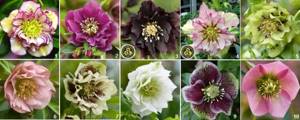
Among the new varieties, it is worth highlighting: 1 - “Double Pink” (terry white with pink edging), 2 - “Double Red” (double cherry with a purple tint), 3 - “Double Helen Parple” (terry dark purple, almost black) , 4 — “Double Helen Picoti” (white terry with bright pink veins), 5 — “Double Helen Green” (light green color), 6 — “Double Helen Pink” (pale pink), 7 — “Double Helen Yellow” ( lemon), 8 - “Double Helen White” (white). The word “double” in the names is used for hellebore varieties with double perianth.
The variety "Pretty Ellen Spotted" (9) has white flowers with a slight greenish tinge and lilac-violet splashes, up to 50 cm high, suitable for bouquets. And “Pretty Ellen Pink” (10) is no higher than 20 cm, the flowers are pink.
"Golden Discovery" has semi-double flowers with a greenish tint. They can be 10 cm in diameter, the plant itself is no higher than 30 cm. The “Winter Emoticons Triple Pink” variety has the same large flowers; they are delicate pink in color, and their total height is about half a meter.
“Website about plants” www.pro-rasteniya.ru
RETURN TO SECTION
| < Previous | Next > |
Hellebore: photo
Landing
People in some situations simply do not need a lot of information in order to take on something. So for some, it is enough to read that you can use hellebore for weight loss in order to go and buy this plant. At the same time, people may not even know what time of year is best to do this, let alone how to care for it.

There are times when a buyer plants a hellebore, and a week later it turns out that there is a better place, well, at least for a person. They replant it again, and after a while they begin to notice that the plant begins to weaken and even wither. This is because hellebore is very sensitive to transplantation and can remain in the same place for up to ten years.
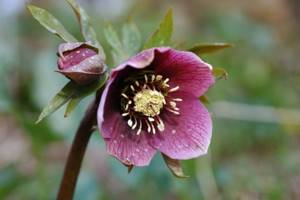
The best time to acquire such a plant will be two periods of time - April and September. These two months are best for planting a Christmas rose.
Reproduction
Most often, hellebores are grown from seeds, which are collected after the first year. Much less often, people buy a ready-made plant, precisely because of problems with replanting. It is best to sow in the last days of June, when flowering ends and seeds are collected.
The soil should be moistened and fertilizer added to it. By next spring you will receive a plant that will not only please you, but also be beneficial.
